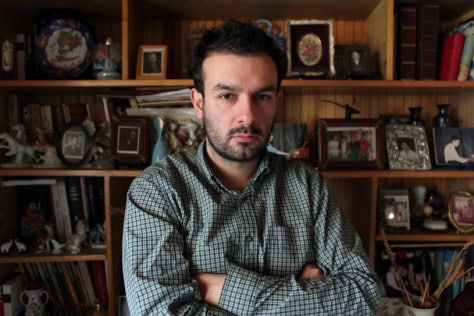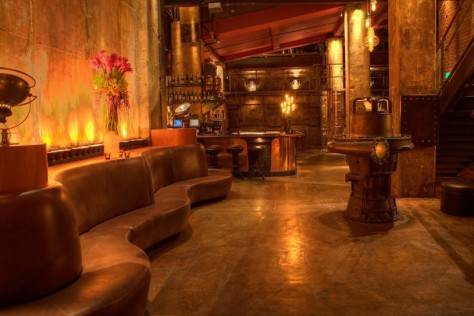I’m sitting on the second tier of the Dance Hall of Beijing’s National Performing Arts Center, peering over the handrails at the crowd below, when the man seated next to me asks, “So what are we seeing tonight? Rap concert? Hip hop break dancing?”
Surveying the crowd below, you wouldn’t have been too surprised if he was right. The seats for the performance of “Carmina Burana” were punctuated by signposts of teenage youth—skinny jeans, bright screen print tees, trucker hats, cell phone charms. Once the curtain dropped at intermission, a wave of cell phone screens twinkled in the dark theatre, mimicking the fluorescent gems that illuminate the Opera Center’s exterior façade during dusk. The Chinese classical scene, much like its architecture, is rapidly exploding into a new frontier. Qian Yunting, a 23 year old assistant at an architecture firm, asked me, “How old are American children when they learn to read musical notes?” It was difficult for me to explain that not all Americans learn to read music during their formative childhood years, let alone play an instrument. Upon his own visit to the Performing Arts Center, classical music aficionado Alex Ross noted, “The Sichuan Conservatory, in Chengdu, is said to have more than ten thousand students; Julliard, by contrast, has eight hundred.” The expansion of Chinese classical music has enveloped not only younger generations, but formerly taboo performers as well. The headlining dance troupe of Thursday night’s performance was led by Jin Xing, China’s most emblematic transsexual, surgically transformed from a male colonel in the People’s Liberation Army to the first female contemporary choreographer to have received recognition in over half a century of national Communism.
That night at the opera encapsulates the 2008 Olympic China—young, vibrant, and experimental. As Beijing gears up for this global event, the city find itself caught in a tense dichotomy between modern and traditional, often placing these two polar opposites together like magnets. Would Carmina Burana’s Nazi-collaborating composer, Carl Orff ever have imagined that his piece would accompany an interpretative dance by a Chinese transsexual? Does Mao’s portrait looming over Tiannamen square welcome its new Performing Arts Center neighbor with two arms (as is Chinese custom), or raise a suspicious brow over the cylindrically shaped sore thumb?
Designed by French architect, Paul Andreau, the National Grand Theater's titanium dome surrounded by a man made moat was conceptually meant to evoke a rising sun or a pearl, but has colloquially been referred to as the egg. The architect defended his circular form as a balance to the orthogonal footprint of Tiananmen Square, which is located immediately west of the structure. This follows the the ancient Chinese concept of “round sky, square earth.” Vague form metaphors aside, Andreu has expressed that his design is meant to continue a valued lineage of traditional Chinese architecture, as opposed to sever from it. The impact of the building’s iconic shape has been likened to the Sydney Opera House—to mark the international nature of a capital city. As if to mimic the concentric circle ring road system of Beijing, the architect also surrounded the theatre with concentric rings of landscaping to camaflogue the building from the street.
Many local Beijingers have treated the building like any long-established clique would treat an aloof new kid: nasty nicknames and rejection. Los Angeles Times writer, Barbara Demick writes of the center’s common alias: “Egg is not a flattering epithet in Chinese, being attached to various insults such as ben dan (stupid egg) and huai dan (rotten egg). (There is no “good egg” in Chinese slang.)” The jab of this disparaging metaphor hits harder as soon as you enter any one of the “All Days” convenience stores that appear in Beijing with as much frequency as Starbucks in Los Angeles. Poised beside every cash register are brown eggs bobbing in a pot of boiling water. In my experience, I’ve only see one type of person buy this snack: extremely low-income construction workers who are otherwise squatters. On a more official note of disapproval, multiple letters had been sent by academics to Premier Wen Jiabao protesting the building.
While locals may criticize the aesthetics of the building, these petitioners criticized its functionality. In order to preserve an uninterrupted façade, Andreu forces theater-goers to enter the space from a submerged entrance. Through the main entrance on the building’s north side, one processes down a grand staircase and enters into the main lobby, which provides one of the best moments in the building. Walking beneath a transparent view of the pool above provides a sublime water ripple pattern that projects mobile shadows onto the wall before sunset. But the submerged entrance is intrinsically problematic, as petitioners detail the difficult emergency evacuation that results: “You would have to run 250 meters from your seat to get out in a fire. That would never be allowed under the building codes anywhere in the United States of Canada.” Qingyun Ma, design principal of MADA spam notes, “That wonderful glass under the water is obscured by those heavy steel spider clips that have to brace them. That steel structure doesn’t suit the design. It cheapens the moment.”
I strolled the pool lined path that encircles the center with Qingyun Ma and Clifford Pearson, the deputy director of Architectural Record, who had toured the “egg” during its construction. One of his favorite moments was the point where the titanium shell met the glass curtain wall, which widens from bottom to top. When Ma criticized the inefficiency of the curved cut (as opposed to a cut along a titanium panel axis), Clifford surmised, “Perhaps the designers wanted it to appear like a curtain being pulled back from the stage.” A much more plausible reasoning than my initial hypothesis of yin-yang allusions.
Trying to make excuses for questionable design moves seems to be a pointless, unending guessing game (last one—the theater has extremely poor acoustics, even from our elevated back row where the sound should be its best). Looking out from the top tier of the central circulation corridor, out onto Forbidden City, one forgets these smaller issues to appreciate a larger feat: to construct an iconic building, both in its location and form, that will function as a stage for Beijing during the Olympics. China has pulled back their curtain of mystery, and the entire world is watching.
 Q&A with Larry Gus
Q&A with Larry Gus We Own the Night: The Edison
We Own the Night: The Edison
No Comments